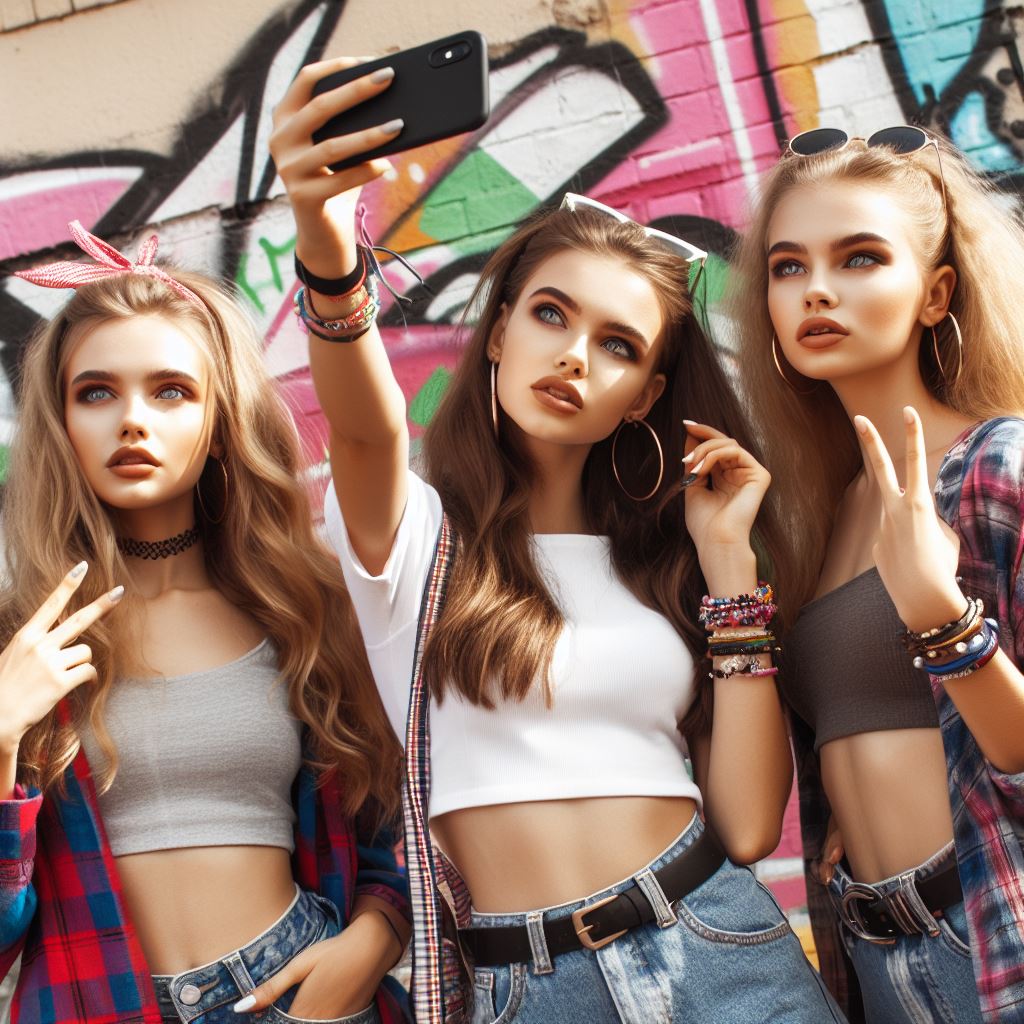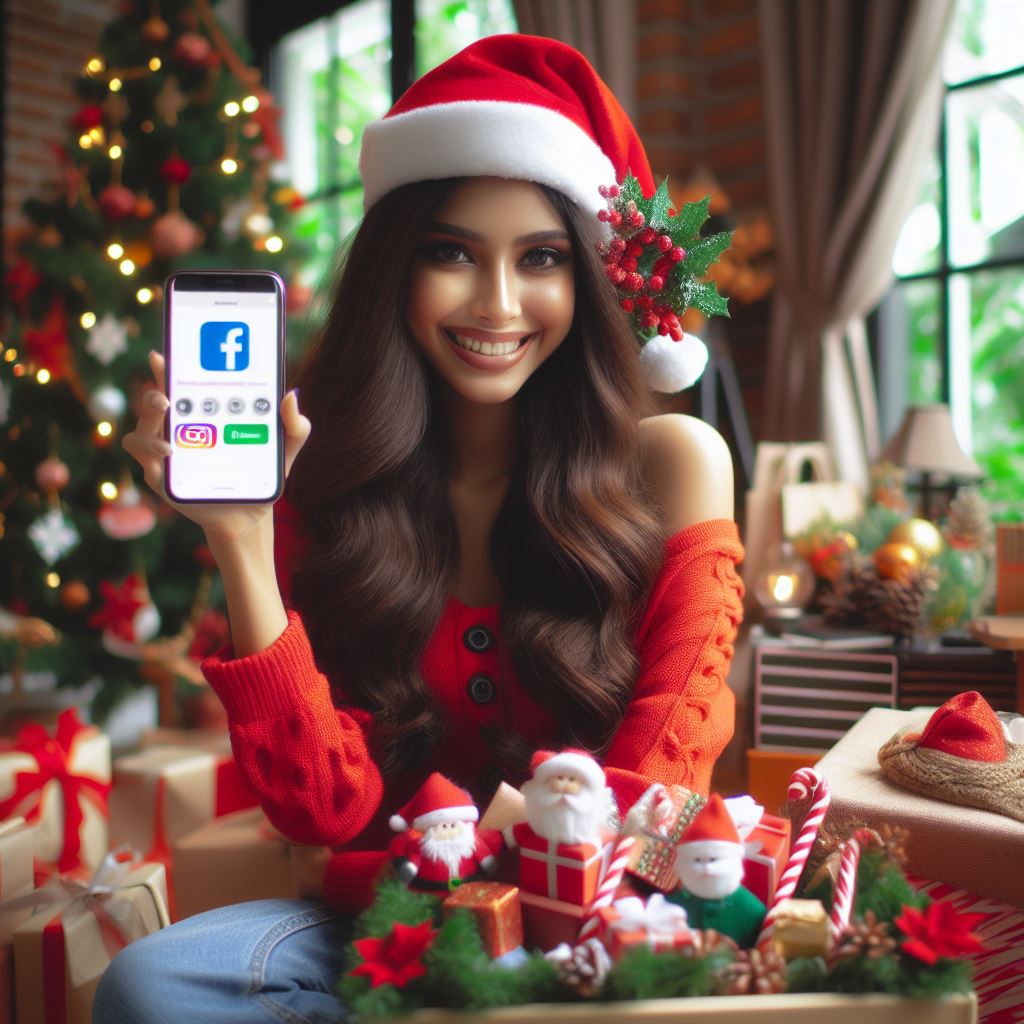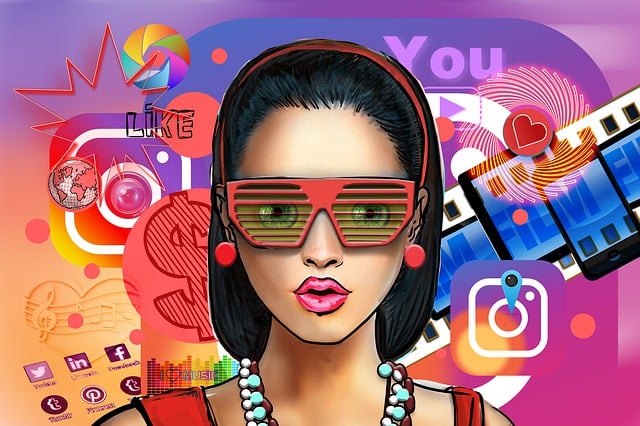Social Media Girls: Navigating the Digital Landscape

The advent of the digital economy has ushered in a new era of self-expression, and within this digital landscape, the term “social media girls” has emerged. Let’s delve into the nuances, evolution, challenges, and empowerment associated with this phenomenon.
Table of Contents
Introduction
In today’s hyper-connected world, the phrase “social media girls” has become commonplace, signifying a group of individuals who actively curate their lives online. This article explores the multifaceted nature of girls online, examining the evolution of the term and its impact on individuals and society at large.
Defining Social Media Girls

Social Media Girls on the beach
Social Media Girls Characteristics and Traits
It’s important to note that individuals vary widely, and generalizing traits for a specific group, such as “Social Media Girls,” can be problematic and may perpetuate stereotypes. People who use social media come from diverse backgrounds and have unique personalities. However, certain characteristics and traits are commonly associated with individuals who are active on social media platforms. Keep in mind that these are generalizations and may not apply to everyone:
- Tech-savvy: Social media users tend to be comfortable with technology and digital platforms.
- Creativity: Many social media users express themselves through creative content such as photos, videos, and artwork.
- Socially connected: They often have a large network of friends, followers, and connections on various social media platforms.
- Communication skills: Effective communication is crucial for engaging with others on social media, whether it’s through captions, comments, or direct messages.
- Photogenic: Users who frequently share images may be conscious of aesthetics and have an eye for visually appealing content.
- Trend-conscious: Social media users may be aware of current trends, hashtags, and popular topics to stay relevant in online conversations.
- Self-expression: Many use social media as a platform for self-expression, sharing their thoughts, opinions, and experiences with a wide audience.
- Brand-conscious: Some individuals on social media may be conscious of personal branding and how they present themselves online.
- Adventurous: Those who share travel, exploration, or lifestyle content may be more adventurous and open to new experiences.
- Community engagement: Active social media users often engage with online communities, participate in discussions, and support others’ content.
It’s important to recognize that these traits are not exclusive to any particular gender or group. Social media is a diverse space with users from all walks of life, and characteristics can vary significantly. Additionally, individuals may use social media differently based on their personal preferences, interests, and goals.
Positive and Negative Connotations
It’s crucial to approach discussions about social groups, including “social media girls,” with sensitivity, as generalizations can perpetuate stereotypes and may not accurately represent individuals within those groups. People have diverse experiences and motivations for using social media, and it’s important to recognize the individuality of each person. However, I can outline some general perceptions and potential positive and negative connotations associated with the term:
Positive Connotations:
- Influential: Social media girls may have the ability to influence and inspire others through their content and opinions.
- Creative Expression: Many individuals using social media platforms showcase their creativity and artistic talents, contributing positively to online content.
- Community Building: Active social media users often engage with and build communities, fostering connections and support networks.
- Entrepreneurial Spirit: Some individuals leverage social media to build personal brands and pursue entrepreneurial opportunities.
Negative Connotations:
- Stereotyping: The term “social media girls” can lead to stereotyping and oversimplification, ignoring the diversity of experiences and interests within this group.
- Superficiality: There might be a perception that some individuals on social media prioritize appearance and superficial aspects over substance.
- Validation-Seeking: Some may associate social media use with seeking external validation through likes, comments, and follower counts.
- Pressure and Comparison: Social media can contribute to feelings of inadequacy, as users may compare themselves to others’ curated online personas.
- Privacy Concerns: Excessive sharing on social media can lead to privacy concerns and potential risks, especially if personal information is shared without caution.
It’s essential to approach discussions about social groups with an understanding that individuals have unique experiences and motivations. Generalizations can perpetuate biases and contribute to stereotypes, so it’s important to be mindful of the diverse ways people engage with and use social media.
Evolution of Ladies Online
Societal Perceptions Over Time
Societal perceptions evolve due to cultural shifts, technological advancements, and changing norms. Attitudes towards issues like gender roles, diversity, and social justice can transform, reflecting a dynamic society. Media, education, and activism play pivotal roles in shaping and challenging these perceptions, contributing to a continual reevaluation of societal values and beliefs.
Influences Shaping the Archetype

The archetype of “social media girls” or any similar categorization is shaped by a combination of cultural, social, and technological influences. These influences contribute to the formation and perpetuation of certain stereotypes and archetypes. Here are some key factors that play a role:
Media Representation: Media, including television, movies, and online content, often portrays certain archetypes or stereotypes. The way individuals are depicted on social media in popular culture can influence public perceptions and contribute to the creation of archetypes.
Social Norms and Expectations: Societal norms and expectations regarding beauty standards, success, and self-expression can influence how individuals present themselves on social media. These norms, in turn, shape the archetype associated with “social media girls.”
Technological Advancements: The rapid evolution of technology, especially the rise of social media platforms, has transformed how people communicate and express themselves. The features and functionalities of these platforms influence the types of content users create and share, contributing to the formation of certain archetypes.
Cultural Values: Cultural values and trends play a significant role in shaping archetypes. Different cultures may place varying levels of importance on self-expression, individualism, and digital presence, contributing to the diversity of archetypes within different cultural contexts.
Peer Influence: The behaviour of peers and social circles on social media can influence individuals to conform to certain archetypal patterns. Trends and norms within online communities contribute to the shaping of archetypes.
Economic Factors: Influencers and individuals on social media may be influenced by economic factors, such as the potential for financial gain through sponsorships, partnerships, or brand collaborations. This can shape the type of content they create and share.
Evolution of Social Platforms: As social media platforms evolve, introducing new features and formats, users adapt their behavior accordingly. This evolution contributes to the continuous shaping and reshaping of archetypes on social media.
It’s important to note that archetypes are generalizations and may not accurately represent the complexity of individuals. People engage with social media in diverse ways, driven by personal motivations, interests, and values. While archetypes can provide a framework for understanding patterns of behaviour, it’s crucial to approach these concepts with nuance and avoid perpetuating stereotypes.
The Role of Instagram in Shaping
Platform for Self-Expression
The role of Instagram in shaping societal perceptions is multifaceted. As a dominant social media platform, Instagram influences trends, beauty standards, and lifestyle expectations. It serves as a visual medium, impacting self-expression and fostering a culture of curated images.
Instagram shapes individual and collective identities, fuels influencer culture, and amplifies societal conversations. However, it also raises concerns about authenticity, mental health, and the perpetuation of unrealistic ideals.
Instagram’s impact highlights the power of digital platforms in moulding contemporary social norms and contributing to ongoing discussions about online influence and representation.
The Role of Aesthetics and Visual Content
The role of aesthetics and visual content is crucial in shaping perceptions, especially in the context of platforms like Instagram. Aesthetics refers to the principles of beauty and taste, and visual content relies on images and design elements. In the digital age, particularly on social media, this plays a significant role in several ways:
- First Impressions: Visuals are often the first impression. Aesthetically pleasing content can capture attention and create positive initial perceptions.
- Brand Identity: Aesthetics contribute to brand identity, helping individuals and businesses establish a recognizable and cohesive visual presence.
- Curation of Lifestyle: Platforms like Instagram emphasize curated lifestyles through visually appealing photos, influencing how users present their lives and experiences.
- Influencer Culture: Influencers often prioritize aesthetics to build a visually cohesive and attractive online persona, attracting followers and brand partnerships.
- Cultural Trends: Aesthetic trends on social media influence broader cultural trends, impacting fashion, design, and visual storytelling.
- Psychological Impact: Visuals can evoke emotions and shape psychological responses. A well-crafted image can convey messages and influence perceptions more effectively than text alone.
- Social Comparisons: Aesthetic standards on social media can contribute to social comparisons, affecting individuals’ self-esteem and body image.
- Content Consumption: Visual content is often more engaging, leading to increased user interaction and consumption on platforms like Instagram.
However, it’s essential to recognize the potential downsides, including the pressure for perfection, the promotion of unrealistic standards, and the impact on mental health. Balancing aesthetics with authenticity is an ongoing challenge in the realm of visual content on social media.
Diversification Across Platforms

The Influence of TikTok
TikTok has a significant influence on the social media landscape, including its impact on individuals often associated with the term “social media girls.” Here are some ways in which TikTok influences this group:
Short-Form Content: TikTok’s emphasis on short-form videos encourages quick, engaging, and creative content. Social media girls may leverage this format for self-expression, storytelling, and showcasing their talents.
Trends and Challenges: TikTok popularizes trends and challenges that quickly spread across the platform. Social media girls often participate in and contribute to these trends, fostering a sense of community and shared experiences.
Diverse Content: TikTok allows users to explore various content genres, from comedy to education. Social media girls can diversify their content, reaching wider audiences with different interests.
Authenticity and Relatability: TikTok’s informal and authentic atmosphere encourages genuine expression. Social media girls may find the platform conducive to showcasing a more authentic side of their lives, fostering relatable connections with their audience.
Music Integration: TikTok heavily incorporates music into its content, allowing social media girls to express themselves through music and dance, enhancing the entertainment value of their content.
Algorithmic Reach: TikTok’s algorithm helps content reach a broader audience, giving social media girls the potential for viral moments and increased visibility.
Innovative Editing Tools: TikTok provides creative and user-friendly editing tools, enabling social media girls to enhance the visual appeal of their content easily.
Global Community: TikTok’s international user base facilitates cross-cultural interactions. Social media girls can connect with a diverse audience, broadening their reach and perspectives.
However, it’s essential to recognize potential challenges, such as the fast-paced nature of trends, the impact on mental health, and concerns related to data privacy. The influence of TikTok on social media girls reflects the evolving landscape of digital communication, with both positive and potentially challenging aspects.
Facebook and YouTube as Alternative Platforms
While Instagram and TikTok dominate, Facebook and YouTube offer distinct advantages. Facebook connects with broader audiences, fostering a sense of community, while YouTube provides a platform for long-form content and deeper connections.
Challenges Faced by Social Media Girls
Cyberbullying and Online Harassment
Despite the positive aspects, girls online often face cyberbullying and online harassment. The anonymity of the digital realm amplifies these challenges, impacting mental well-being.
What is Cyberbullying?
Cyberbullying refers to the use of electronic communication, such as social media, text messages, or online platforms, to harass, intimidate, or harm individuals. This form of bullying involves repetitive and intentional behaviour with the intent to cause emotional distress or harm.
Cyberbullying can take various forms, including spreading rumours, sending threatening messages, sharing private information without consent, or creating fake profiles to impersonate or mock someone.
Online Harassment: Online harassment is a broader term that encompasses various forms of unwanted, repeated digital communication or actions that cause distress to an individual. It includes behaviours beyond bullying, such as stalking, hate speech, discrimination, or the persistent targeting of someone online.
Online harassment can occur on social media, forums, email, or any digital platform, and it may involve individuals, groups, or even automated bots. The impact of online harassment can range from emotional distress to serious threats to a person’s safety.
Danger of Cyberbulling
Both cyberbullying and online harassment are serious issues that can have significant negative effects on the mental health and well-being of those targeted. Efforts to prevent and address these issues often involve promoting digital literacy, creating safe online environments, and implementing policies to deter and respond to such behaviours.
Mental Health Implications
The constant need for validation and comparison with others can contribute to mental health issues. It’s crucial to address these concerns and foster a supportive online environment.
Empowerment Through Social Media
Empowerment through social media refers to the positive impact and transformative potential that social media platforms can have on individuals and communities. Here are key aspects of empowerment through social media:
Positive Narratives and Stories
Amidst challenges, social media provides a platform for positive narratives. Stories of resilience, empowerment, and overcoming obstacles showcase the potential for social media to be a force for good.
Amplification of Voices:
- Social media provides a platform for individuals, especially those traditionally marginalized or underrepresented, to share their stories, perspectives, and experiences with a global audience. This amplification helps in breaking stereotypes and promoting inclusivity.
Community Building:
- Social media enables the creation of online communities where like-minded individuals can connect, share information, and provide support. This fosters a sense of belonging and empowerment as people find strength in numbers.
Advocacy and Activism:
- Activists and advocates leverage social media to raise awareness about social issues, mobilize support, and drive change. The widespread reach of these platforms facilitates the rapid dissemination of information and helps in organizing collective action.
Skill Development and Education:
- Social media platforms offer opportunities for learning and skill development. Online courses, tutorials, and educational content empower individuals to acquire new skills, enhancing their personal and professional growth.
Entrepreneurship and Economic Opportunities:
- Social media has become a powerful tool for entrepreneurship. Individuals can promote their businesses, showcase their talents, and reach a global market, thereby creating economic opportunities and financial independence.
Self-Expression and Creativity:
- Social media encourages self-expression through various forms of content, such as photos, videos, and writing. This creative outlet allows individuals to express their identity, share their passions, and connect with like-minded individuals.
Access to Information:
- Social media democratizes access to information. People can stay informed about current events, access educational resources, and engage in informed discussions, contributing to their intellectual empowerment.
Mental Health Support:
- Social media platforms can serve as spaces for mental health awareness and support. Individuals facing challenges find communities that share experiences, offer encouragement, and promote mental well-being.
While social media empowers individuals in various ways, it’s important to be mindful of potential challenges, including online harassment, misinformation, and the need for digital literacy. Empowerment through social media is about leveraging the positive aspects while being aware of and addressing the negative ones.
Platforms as Tools for Empowerment
Social media, when used strategically, becomes a tool for empowerment. Activism, entrepreneurship, and community-building are avenues through which to create positive impacts.
S.M Girls and Feminism
Relationship Between Feminism and Social Media Girl Culture
The relationship between feminism and social media girl culture is complex, and perspectives on this connection can vary. Here are some key aspects to consider:
Empowerment and Agency:
Feminism often advocates for the empowerment and agency of women. Social media girl culture, through platforms like Instagram or TikTok, can provide spaces for women to express themselves, share their stories, and build communities, aligning with feminist ideals of individual empowerment.
Challenges to Stereotypes:
Social media girl culture can challenge traditional gender stereotypes by showcasing diverse expressions of femininity. Women on social media platforms may redefine beauty standards, challenge body image norms, and assert their identities in ways that align with feminist principles.
Digital Activism:
Social media is a powerful tool for feminist activism. Women use platforms to raise awareness about gender inequalities, advocate for reproductive rights, and mobilize support for various feminist causes. The online space allows for the rapid dissemination of feminist ideas and the organization of collective action.
Commercialization and Commodification:
However, some critics argue that aspects of social media girl culture may contribute to the commercialization and commodification of feminism. Brands may co-opt feminist language or imagery for marketing purposes, raising concerns about the sincerity of certain expressions of empowerment.
Body Positivity and Intersectionality:
Social media girl culture has played a role in promoting body positivity and intersectionality within feminism. Influencers and users address issues related to body image, race, sexuality, and more, contributing to a more inclusive feminist discourse.
Don’t forget the Cyberbullying and Online Harassment talked about earlier:
On the flip side, social media girl culture can also expose individuals to cyberbullying and online harassment. Critics argue that women on these platforms, especially those with a feminist agenda, may face disproportionate levels of online abuse and harassment.
Critique and Support from Feminist Perspectives
Feminist perspectives on social media girls are diverse, ranging from critiques of perpetuating stereotypes to celebrating the autonomy and agency displayed by these individuals.
Balancing Authenticity and Presentation
Pressure to Curate a Perfect Image
The pressure to present an idealized version of oneself online is a common challenge. Striking a balance between authenticity and a curated image becomes crucial for navigating the digital landscape.
Navigating Authenticity in the Age of Social Media
Understanding the importance of authenticity and embracing imperfections is key to fostering genuine connections with an audience.
Influence on Fashion and Beauty Trends
Social Media Girls as Trendsetters
These girls extend beyond the digital realm, influencing fashion and beauty trends. Their ability to set trends has transformed industries.
Impact on Fashion and Beauty Industries
From makeup tutorials to fashion hauls, social media girls play a significant role in shaping consumer preferences and driving market trends.
Diverse Platforms, Diverse Influences
The Unique Dynamics of TikTok Culture
TikTok, with its algorithm-driven content discovery, fosters trends that can go viral overnight. The platform’s emphasis on creativity has made it a playground for diverse expressions.
Facebook’s Role in Connecting with Broader Audiences
Facebook, with its vast user base, provides social media girls with the opportunity to connect with diverse audiences. Community-building and sharing personal stories become more accessible on this platform.
YouTube as a Platform for Deeper Connections
YouTube’s long-form content allows social media girls to delve deeper into their lives. Vlogs, tutorials, and personal narratives create a more profound connection with the audience.
Social Media Girls in Popular Culture
Representation in Movies, TV Shows, and Music
The influence of social media girls is not confined to the digital space; it permeates popular culture. Representations in various forms of media contribute to shaping societal perceptions.
Influence on Mainstream Culture
Social media girl culture has become an integral part of mainstream culture, reflecting changing dynamics and preferences.
Criticism and Stereotypes Surrounding Social Media Girls
Common Misconceptions
Addressing common misconceptions surrounding social media girls is essential for dismantling stereotypes and fostering a more nuanced understanding of this digital phenomenon.
Overcoming Stereotypes
Empowering narratives and showcasing the diversity within social media girl culture contribute to overcoming stereotypes and challenging preconceived notions.
The Business of Being an Influencer Online
Monetization Strategies
For many, being an influencer girl is not just a form of self-expression; it’s a business. Exploring monetization strategies, brand collaborations, and building a personal brand reveals the entrepreneurial spirit within this culture.
Building a Personal Brand and Audience
Crafting a personal brand involves strategic planning and consistent engagement. Building a loyal audience is not just about numbers but about creating meaningful connections.
Tips for Aspiring Social Media Girls
Authenticity and Originality
The core of social media success lies in authenticity. Embrace your uniqueness and share your genuine experiences to connect with your audience.
Navigating Challenges in the Online Space
From cyberbullying to the pressure of maintaining an online persona, challenges abound. Develop resilience, seek support, and prioritize mental well-being.
Social Media Girls and the Next Generation
Influence on Younger Generations
As role models, they shape the aspirations and behaviours of the next generation. The impact on young minds calls for responsible and mindful online practices.
Shaping Future Trends and Behaviors
Social media girls, with their influence, play a pivotal role in shaping not just current trends but the future trajectory of digital culture.
Conclusion
In conclusion, social media girls represent a dynamic and influential force in the digital landscape. Navigating through various platforms, facing challenges, and leaving an indelible mark on popular culture, showcase the complexity of online identity. As we reflect on the diverse experiences within the social media girl culture, it’s evident that this phenomenon is both perplexing and bursting with possibilities.
FAQ’s
1. What defines a social media girl?
A Social Media Girl (SMG) is an individual who actively curates and shares aspects of their life on social media platforms, often with a focus on self-expression and aesthetics.
2. How do social media girls navigate cyberbullying?
Navigating cyberbullying involves strategies such as blocking and reporting, emphasizing mental well-being, and fostering a supportive online community.
3. Can SMGs truly be authentic online?
Yes, authenticity is achievable by embracing imperfections, sharing genuine experiences, and cultivating a personal brand that aligns with one’s true self.
4. How do social media girls monetize their online presence?
Monetization strategies include brand collaborations, sponsored content, affiliate marketing, and leveraging platforms like YouTube for ad revenue.
5. What role do social media girls play in shaping fashion and beauty trends?
Social media girls are trendsetters, influencing fashion and beauty industries through makeup tutorials, fashion hauls, and showcasing personal styles on various platforms.



